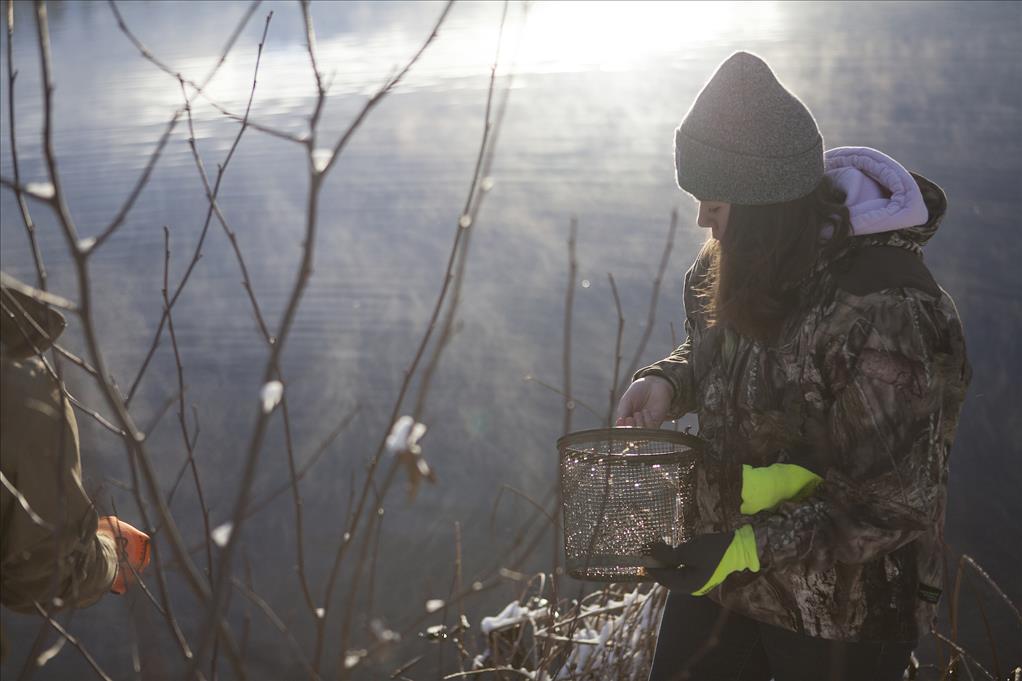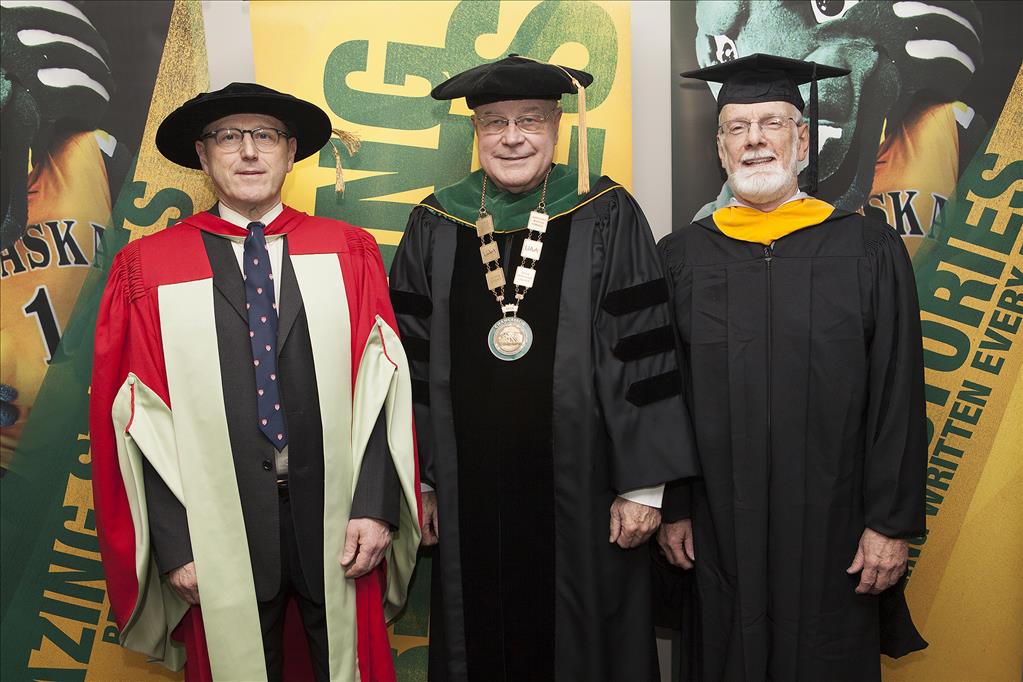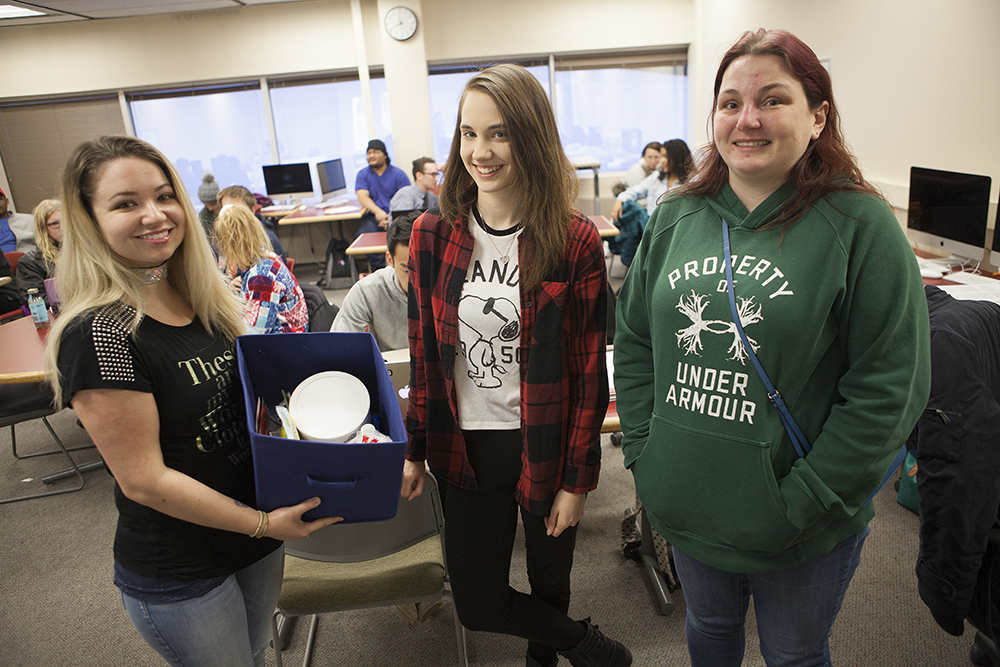Life at 'the Big House:' Inside Alaska's largest fire station
by joey |
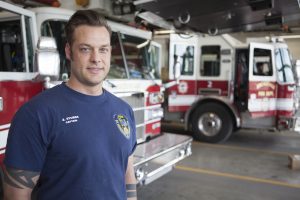
Zach Stubbs, A.A.S. Fire Science '06, is a fire captain at Station 1 in Anchorage and was named to the Alaska Journal of Commerce's 'Top Forty under 40' list earlier this year. (Photo by Phil Hall / University of Alaska Anchorage)
Whether you're stuck in a downtown elevator, your warehouse caught on fire or you've fallen and you can't get up, the crew of Anchorage Fire Department Station 1 will be on the scene.
Station 1, located downtown at Fourth Avenue and A Street, is the largest firehouse in Alaska. Known as 'the big house,' the emergency response crew covers a wide swath of north Anchorage, including a diverse array of buildings, populations and potential for disaster. In December, for example, they were first on the scene when a pilot flew a Cessna 172 into a downtown building, making national news. Earlier this month, they were down in Ship Creek burying team members in thick gray mud to practice rescue operations before the summer fishing season (KTUU footage of the training is available here).
The station houses 10 apparatuses (AKA vehicles), and is the only bay in Anchorage with two engines. The three shifts based out of Station 1 are sized to match; up to 22 may be on patrol at a time. Fire science grad Zach Stubbs, A.A.S. '06, leads one of those three mighty shifts.
Earlier this year, Zach was named to the 2016 'Top Forty under 40" from Alaska Journal of Commerce. Though he traded his rubber boots for dress shoes at the annual recognition banquet-held in April at the Hotel Captain Cook-he was a proudly blue-collar addition among a sea of vice presidents and executives.
Like his fellow awardees, he's a well-spoken, sharp and confident leader with advanced knowledge and strong decision-making skills. Unlike his fellow awardees, though, Zach's job is life-or-death. And though he's candid about the risks of the job, he's also very clear about its rewards.
Always on the move at Station 1
After graduating from Service High School, Zach enrolled at UAA's fire science program as a full-time student. That education paid off quick, as AFD hired him at the age of 20 before he could even finish his degree. Zach took the job, throttling back significantly on his course load.
But he kept working towards his degree. "The UAA program really helped," he said of the decision. "A lot of the adjunct instructors were fire department employees, and every single one of my fire classes was pertinent to what I do here on a daily basis."
Zach graduated in 2006 and, with a fresh degree and years of experience, earned the rank of captain soon after.
For the past seven years, Zach has served at Station 1, which oversees everything between Government Hill and Northern Lights Boulevard, and from Merrill Field to the ocean.
The Station 1 crew is always on the move, and only occasionally in pursuit of a fire. Their area mixes residential, commercial, industrial and recreational zones, including a handful of high-rises, the dangerous muck of Ship Creek and Merrill Field, one of the nation's busiest airstrips. According to Zach, the station's Engine 2 is one of the busiest engines in the country.
The range of calls is just as diverse. When the alarm rings, it could be a spice overdose, a marine rescue, a hospital transport or, occasionally, an actual fire. The AFD's Hazmat team is also housed at Station 1 in case any dangerous materials arrive at the Port of Anchorage (which, yes, is also in their jurisdiction).
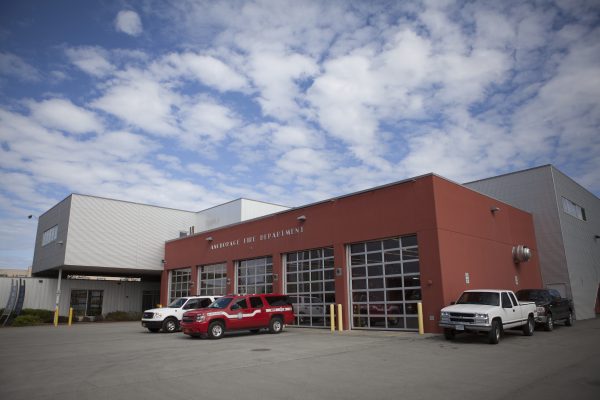
Anchorage Fire Department's Station 1, located at 4th and A, is the busiest and largest firehouse in Alaska. (Photo by Phil Hall / University of Alaska Anchorage)
10 seconds on the scene
Like many firefighters, that unpredictable energy appeals to Zach. "You never know what's coming," he said, noting that every situation is completely different. For example, he may respond to hundreds of vehicle collisions in a year, but each one requires a unique response to the specific spot and circumstances. Within seconds of arriving at the scene, Zach must assess each situation and make the best call.
"I'm the one who comes up with that game plan," he said, explaining his role as captain. "We have 10 seconds to figure out what we're going to do and I make the best call I can. You get the basics in a book and in training, but you still have to come up with a unique game plan for each situation. I really like that challenge."
He describes his role as a "working boss;" though the crew reports to him, and he's in charge of their safety, he's still right there in the action alongside everyone else.
Above and beyond at the big house
Members of an AFD crew spend a third of their lives together, and that firehouse camaraderie is another big draw for the job. Each shift starts and ends at 9 a.m., requiring a full 24 hours of cleaning, cooking, training, scrubbing down trucks and responding to calls. "You build a really good bond," Zach said. "The caliber of people we have here shocks me every day."
With 15 years on the job, he has hundreds of anecdotes that celebrate his co-workers. Times when his crew stayed behind to shovel a driveway or change the sheets after an ambulance blitzed the resident away.
One night, after completing a call, Zach was sitting in the engine waiting for the final member of his team-an ex-NFL linebacker-to leave the house so they could return to the station.
"I go back in the house and he's folding the laundry," Zach recalled, smiling. "He said, 'Oh dawg, the dryer buzzed. If we leave this in there it gets wrinkled.'" So Zach's team filed back inside to fold the woman's laundry.
"It's treating people like they'd want to be treated," Zach noted. "It's fun to do that for people. It's not that others aren't willing to, they just don't get the opportunity to help others like we do. It's pretty awesome."
Zach says he has "very high job satisfaction," and credits education in general for opening doors. "Early on, I felt like I could do about anything I wanted to do. If I wanted to be a doctor or engineer, I'd go to school and do that," he noted.
"Looking back, I'm really glad this is the career path I chose."
 "Life at 'the Big House:' Inside Alaska's largest fire station" is licensed under a Creative Commons Attribution-NonCommercial 4.0 International License.
"Life at 'the Big House:' Inside Alaska's largest fire station" is licensed under a Creative Commons Attribution-NonCommercial 4.0 International License.










